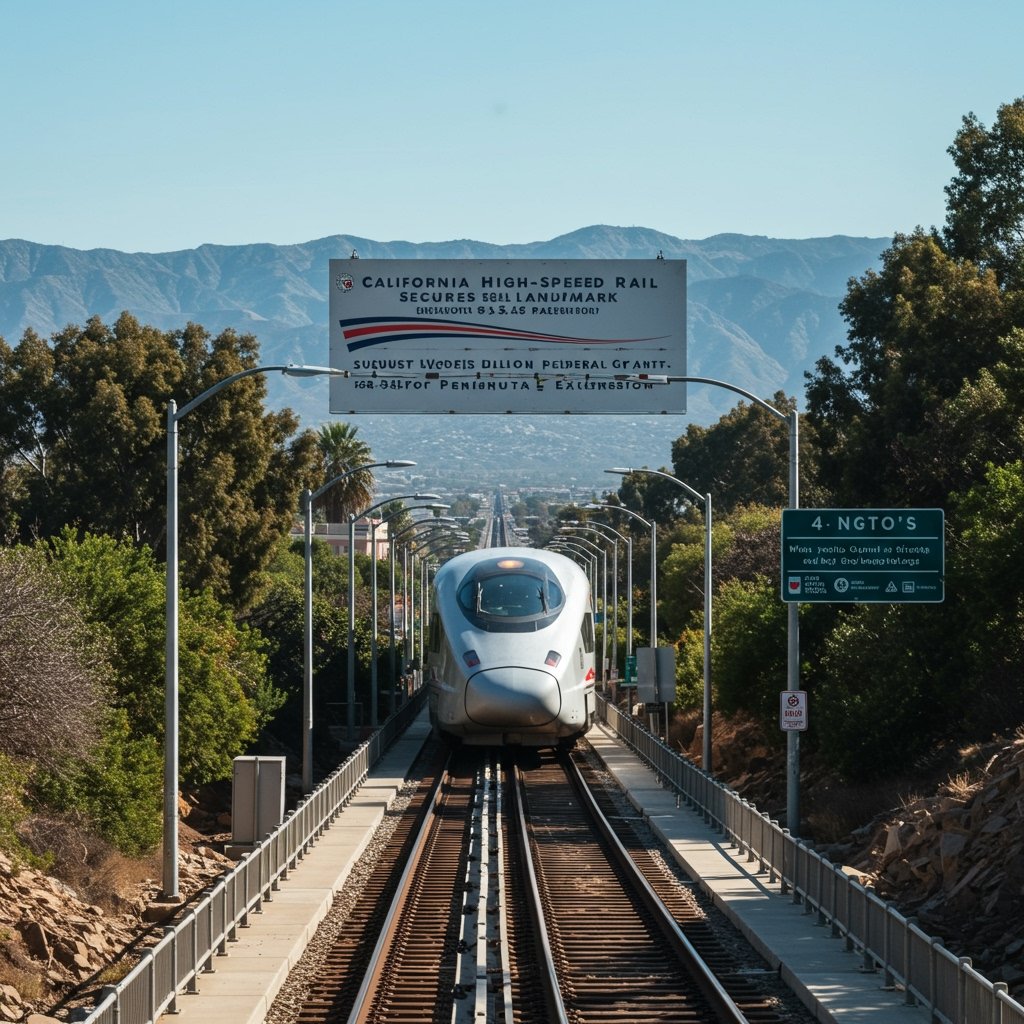Federal Investment Propels California High-Speed Rail Forward
Sacramento, CA – In a significant boost to the ambitious California High-Speed Rail project, the California High-Speed Rail Authority (CHSRA) has successfully secured a substantial federal grant totaling $3.5 billion. Awarded by the U.S. Department of Transportation (USDOT) through the provisions of the Bipartisan Infrastructure Law (BIL), this critical funding infusion is specifically earmarked to accelerate development on a pivotal segment of the planned statewide network: the 50-mile corridor stretching from San Francisco to San Jose, commonly known as the Peninsula segment.
The grant represents a major federal commitment to the California High-Speed Rail project, one of the most complex and large-scale infrastructure undertakings in the United States. Securing this funding is seen by project leaders and state officials as a transformative moment, providing the necessary capital to significantly advance construction activities on this crucial northern section of the alignment.
Advancing the Peninsula Segment: Scope and Impact
The 50-mile San Francisco to San Jose segment presents unique engineering and logistical challenges, primarily due to its densely populated urban environment and the requirement to integrate the high-speed rail infrastructure with the existing Caltrain commuter rail corridor. The $3.5 billion grant is precisely targeted at funding key elements of this challenging section, including essential utility relocation work, significant track construction and upgrades, and the development of critical structures such as viaducts, bridges, and underpasses.
Utility relocation is often one of the most time-consuming and costly preliminary steps in large infrastructure projects, involving the complex process of moving underground and overhead lines for water, sewer, gas, electric, and telecommunications before major construction can begin. The federal funds will substantially accelerate this phase, clearing the path for subsequent track and structure development.
Furthermore, a core aspect of the work on the Peninsula involves modernizing and electrifying the existing Caltrain corridor. The federal grant will facilitate the integration of the high-speed rail system within this shared right-of-way, a process that requires careful coordination and advanced engineering to ensure both high-speed and commuter services can eventually operate efficiently and safely side-by-side. This integration is vital for future service patterns, allowing high-speed trains to access the San Francisco Transbay Transit Center.
Project officials have underscored that this grant is not merely an addition to the project’s budget but a vital catalyst for progressing the northern bookend of the high-speed rail system. The Peninsula segment is strategically crucial as it connects the major population center of San Francisco to the rest of the planned network, ultimately linking the Northern California hub to Los Angeles in the south.
Overcoming Financial Hurdles and Project Context
The California High-Speed Rail project has faced significant financial challenges and scrutiny over its multi-decade development history. The complexity and urban nature of the Peninsula segment, in particular, have contributed to its high cost and intricate planning requirements. The infusion of $3.5 billion specifically addresses these financial hurdles for this complex section, providing the certainty and resources needed to push forward with tangible construction activities.
While progress continues on various fronts, the initial operational segment (IOS) of the California High-Speed Rail system is currently under construction in the Central Valley. This segment, spanning 119 miles between Madera and Shafter, is targeting a late 2029 operational date. The focus on the Central Valley has been a necessary step to build momentum and demonstrate progress, but the long-term vision requires connecting the major metropolitan areas. This new federal grant signals a significant step towards making the northern connection a reality.
The Bipartisan Infrastructure Law, signed into law in November 2021, represents a historic federal investment in America’s infrastructure, including passenger rail. The award to California High-Speed Rail highlights the federal government’s recognition of the project’s potential to transform intercity transportation in the state, reduce greenhouse gas emissions, and spur economic development through job creation and increased connectivity.
Securing grants of this magnitude is a competitive process, requiring detailed project planning, demonstrated need, and alignment with federal priorities. The CHSRA’s successful application for these BIL funds underscores the project’s maturity and readiness to utilize significant capital effectively on the Peninsula segment.
Looking Ahead: Accelerated Progress and Future Connectivity
The $3.5 billion federal grant is expected to significantly accelerate the pace of work on the San Francisco to San Jose corridor. This includes speeding up the complex process of moving utilities, which can often cause delays, allowing track installation and structural construction to commence sooner. The accelerated progress on the Peninsula will be highly visible to the public and represents tangible movement towards completing the statewide system.
Beyond the direct construction benefits, the funding is anticipated to support thousands of construction jobs in the Bay Area. It also reinforces the long-term viability and commitment to connecting the state’s two largest metropolitan areas with high-speed rail, fulfilling the original vision of the project. While challenges remain for the full system build-out, this grant marks a crucial turning point, providing the necessary federal partnership and funding to tackle one of the project’s most critical and complex sections, bringing high-speed rail service closer to the residents of the Bay Area.


















